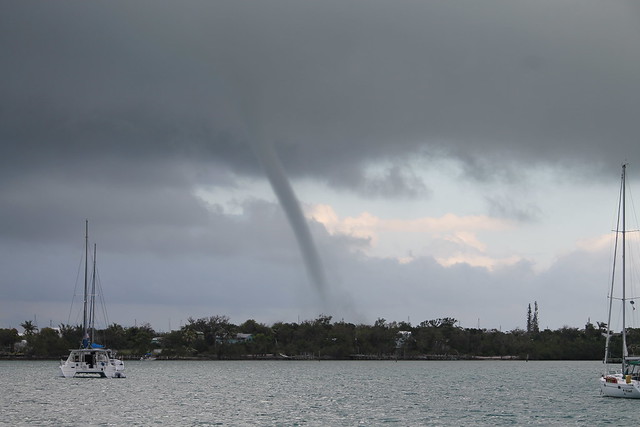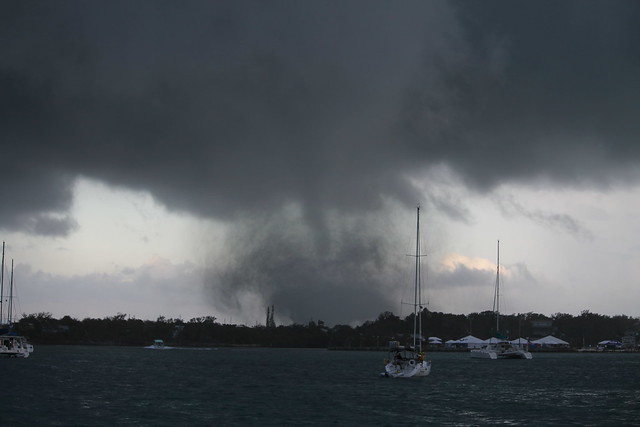I have written elsewhere about our homeschool, or rather, boatschool practices (see FAQ: Do You Homeschool the Children?), but from time to time I like to post an update about what we’re learning on Take Two. Now that we are traveling, formal schooling has taken a back seat to fun and exploration. Instead of doing the “Daily Dozen” (see footnote), we’re down to three: Reading, ‘Riting, and ‘Rithmatic. The children are still responsible for a page in their math workbooks, an entry in their journals, and a chapter in the book we are currently reading (we just finished the WWI autobiography Seargent York and the Great War and have moved on to Karen Hess’s Out of the Dust), but these tasks are usually done before noon. When the school-work and chores are done, the kids are free to pursue their own interests, and I am pleased to report that the choices they make for free time are both diverse and fascinating. Our key mission is to inspire our children to be life-long learners—after all, life is school—and we are beginning to see them independently take on challenging books and projects (yay!). Aside from the history and science they pick up as we travel, they are each exploring new areas on their own.
Eli, 11, is learning Small Basic. Jay set him up on an old computer and gave him a tutorial and a book, which he is working through as if it were a game instead of a new language. (I wish he felt that way about Spanish!) Earlier this year, Jay gave a mini-lesson on a base-two number system, and Eli took an interest and wrote a coded letter to a friend in binary. While we lived in Marathon, he picked up a new sport: tennis. He and I spent many a happy afternoon hitting and chasing little green balls. He reads like a fiend when given the chance, and is currently reading Mary Shelley’s Frankenstein.
Aaron, 10, is our most mechanically-inclined child so far, and is teaching himself electronics. It started with a set of Snap Circuits he got for Christmas one year, but has quickly morphed into projects from Charles Platt’s Make: Electronics using chips, wires, a soldering gun, capacitors, resistors, LEDs, and some tiny little color-coded wires. Don’t even ask me what he’s doing, because I don’t understand it. He also got a neat Lego motorized loader/bulldozer set for his birthday last year and has been using gears from that set to build gear boxes that have six speeds and actually shift. While his brother was enjoying tennis, he was practicing the half-pipe on his skateboard and discovering a love for basketball. His favorite book is David Macaulay’s The New Way Things Work.
Sarah, 9, is a little like Ginger Rogers, who could do everything Fred Astaire could do, only backwards and in high heels. She’s working on her online test to get a Florida Boating Safety Education I.D. card so she can captain the dinghy and also doing some computer programming and electronic experiments in her spare time. She prefers learning French to Spanish, paints with acrylics, and writes stories for fun. She is always working on a new knitting project, and is also currently sewing her sister a nine-patch quilt. She’s taken to gardening, and even though we are short on space, she has a pot of carrots growing on deck and an assortment of herbs on my galley window sill. Given some alone time in her room, you can hear her playing her keyboard and it actually sounds like music. She’s always reading at least three books simultaneously, but loves Walter Farley’s Black Stallion series of books on her Kindle.
Sam, 6, is still learning to read, but seems to have a gift for numbers. He has excellent mental math for someone so young and seems to absorb math facts just by being in the same room as the older kids. He is learning to draw airplanes and WWII battle scenes, can play a mean game of chess, put together a 1000-piece puzzle, do complex dot-to-dots with hundreds of dots and really likes stories by Dr. Seuss. He has joined the bigger boys on their flight simulator and enjoys dogfights in his Spitfire.
Rachel, 2, is the smartest toddler we’ve ever produced, a fact I credit with the time Sarah spends reading to her and teaching her every day. She talks in complete sentences, is potty-trained, sings nursery rhymes, counts to ten, and surprises us with her accuracy when naming shapes, colors, and even some numbers and letters. She can dress and undress herself, brush her own teeth, and blow her own nose. She has impeccable manners and loves to have stories read to her. She’s learning to swim, but I’d like to see that skill really solidify this summer, as it will increase her joy and our peace of mind.
Jay and I don’t seem to find a lot of “spare” or “free” time, but when we do find those moments, we love to read. Jay is experimenting with Arduino microcontrollers, and is rereading the Hornblower series by C.S. Forrester for pleasure. He just finished a WWII memoir, With the Old Breed: at Peleliu and Okinawa by E.B. Sledge. As an English major, I read lots of dead white guys in college, but missed a lot of the American authors, so I’m trying to cover some lost ground. I started with Herman Melville’s Moby Dick, and enjoyed it more than I expected to. I took a break and read James Mitchener’s Chesapeake, which led logically into a reading of Harriet Beecher Stowe’s Uncle Tom’s Cabin.
While Jay fiddles with electronics projects with Aaron, Sarah and I experiment with new recipes. We made a skillet coffee cake from Robbie Johnson’s Gourmet Underway. I love it when learning becomes a whole-family venture, and one of my favorite things about homeschooling is that everything at home becomes an opportunity to learn, whether it’s peaceful conflict resolution or how to mix a Goombay Smash for sunset visitors.
Note: The Daily Dozen replaces a project-based curriculum while we have a toddler on the loose. It’s an experiment to see if we can do school in five-minute increments between potty-training and temper-tantrums. The dozen mini-lessons cover these areas: Bible/Family Devotions, Music, Math, Science/Nature, Spanish/French, Vocabulary/Grammar, Geography, Logic/Brain Teasers, Art History, Navigation/Seamanship, Poetry, and History/Literature.



